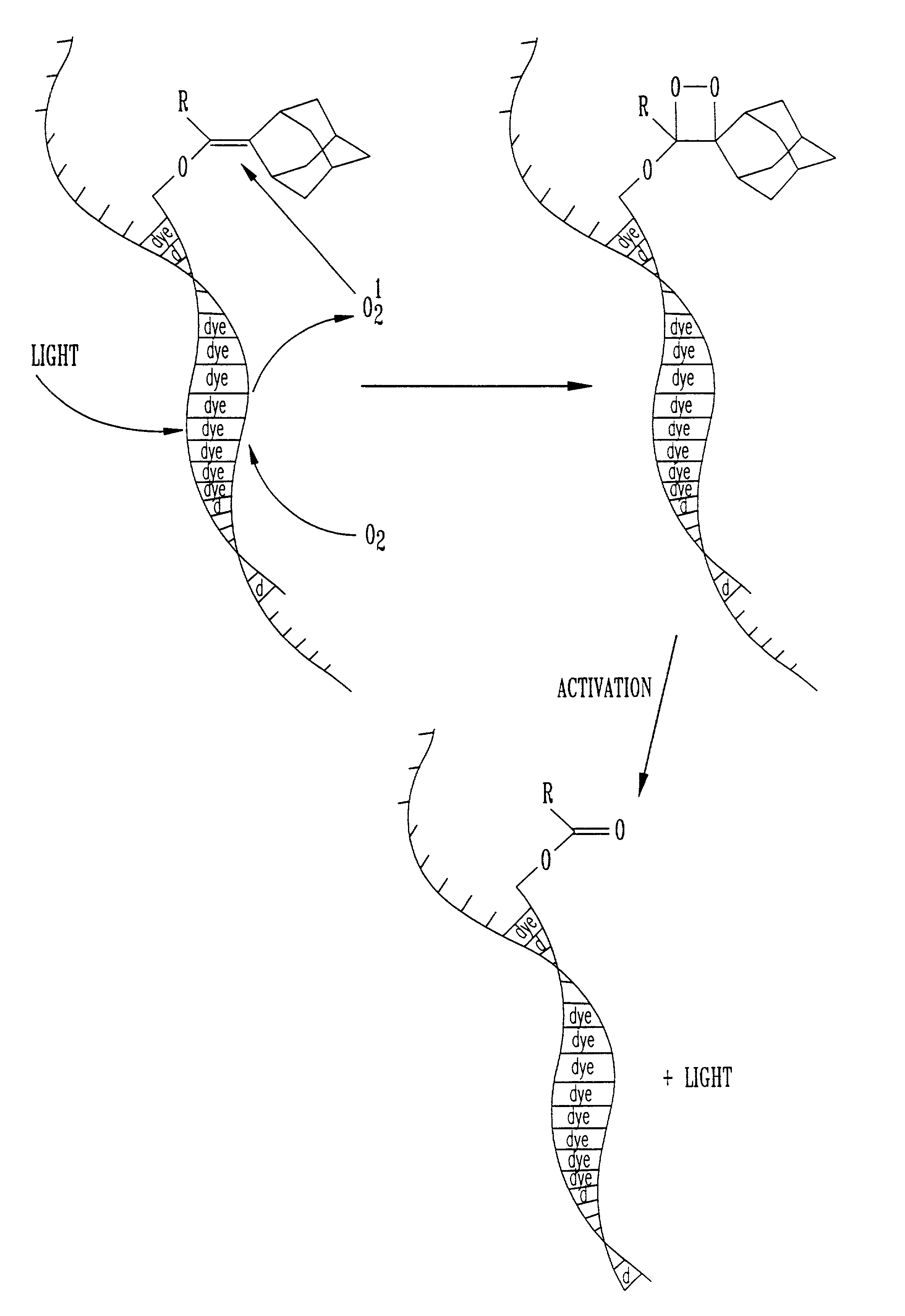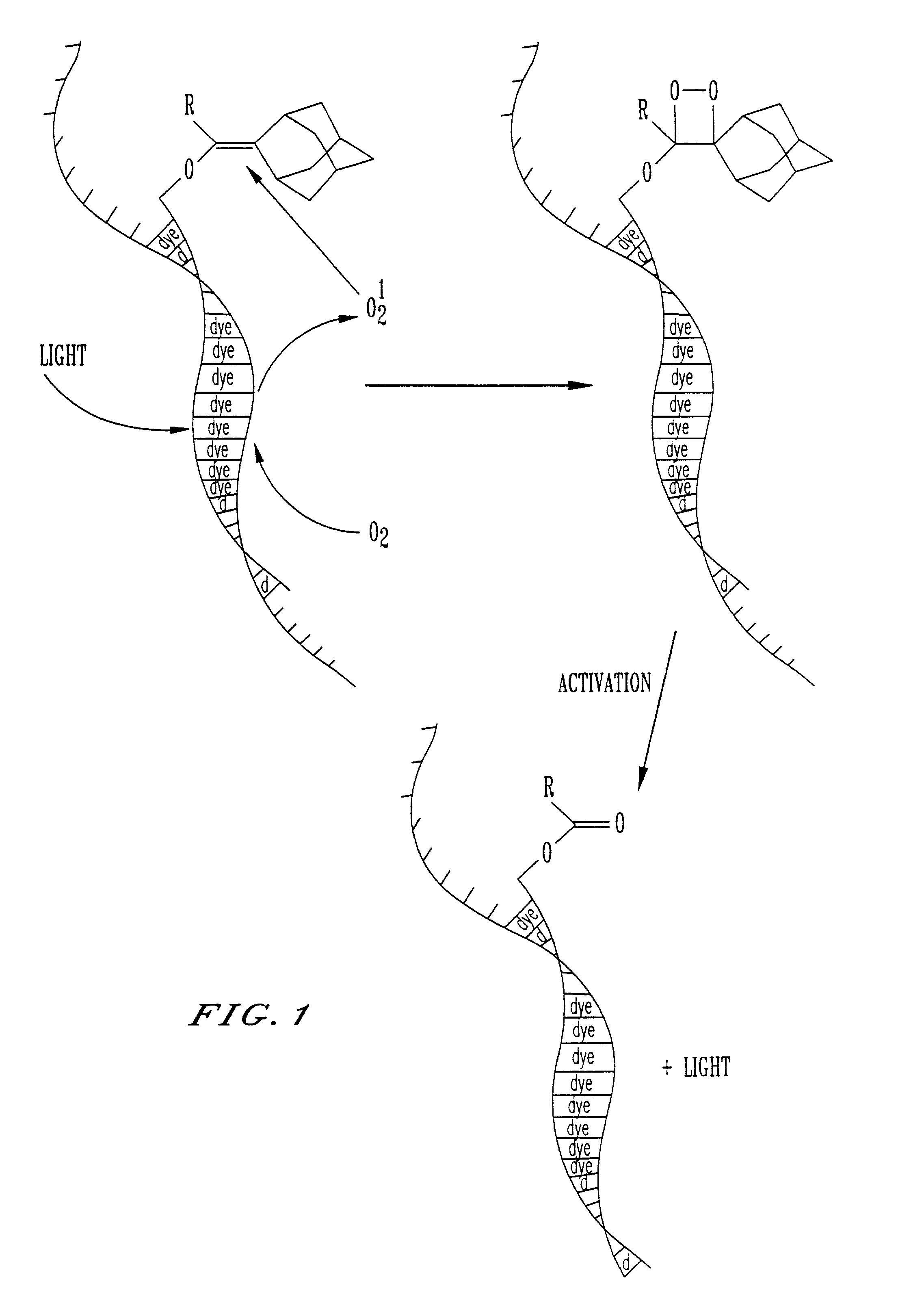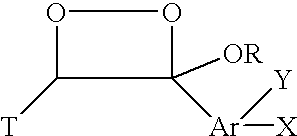Dioxetane labeled probes and detection assays employing the same
a technology of dioxetane and probe, which is applied in the field of probes, can solve the problems of difficult labeling of short oligonucleotide probes used to detect specific target nucleic acid sequences, high molecular weight of most enzymes, and difficulty in using enzyme-cleavable dioxetane as a prerequisite for use of enzyme-cleavable dioxetane described
- Summary
- Abstract
- Description
- Claims
- Application Information
AI Technical Summary
Benefits of technology
Problems solved by technology
Method used
Image
Examples
Embodiment Construction
[0013]This invention is described below, by reference to specific examples. Except where indicated, specific examples are not intended to be limiting, and can be broadly generalized by those of skill in the art without the exercise of inventive faculty, to broadly embrace alternatives within the scope of the claims presented below.
[0014]Nucleic acid probes are widely used in hybridization assays, either directly, or in conjunction with PCR amplified assays. A nucleic acid probe consists of a linked sequence of nucleotide bases. One object of the invention is to provide probes of this type which bear at least one dioxetane precursor bound thereto, preferably through a linker group. The precursor as illustrated below is typically an enol ether or phosphonate ester. This precursor can be represented by the general formula:
[0015]
The dioxetane precursor labels useful in this invention are reactive with singlet oxygen produced from either a photochemical, chemical or thermal reaction. The...
PUM
| Property | Measurement | Unit |
|---|---|---|
| pH | aaaaa | aaaaa |
| temperature | aaaaa | aaaaa |
| composition | aaaaa | aaaaa |
Abstract
Description
Claims
Application Information
 Login to View More
Login to View More - R&D
- Intellectual Property
- Life Sciences
- Materials
- Tech Scout
- Unparalleled Data Quality
- Higher Quality Content
- 60% Fewer Hallucinations
Browse by: Latest US Patents, China's latest patents, Technical Efficacy Thesaurus, Application Domain, Technology Topic, Popular Technical Reports.
© 2025 PatSnap. All rights reserved.Legal|Privacy policy|Modern Slavery Act Transparency Statement|Sitemap|About US| Contact US: help@patsnap.com



